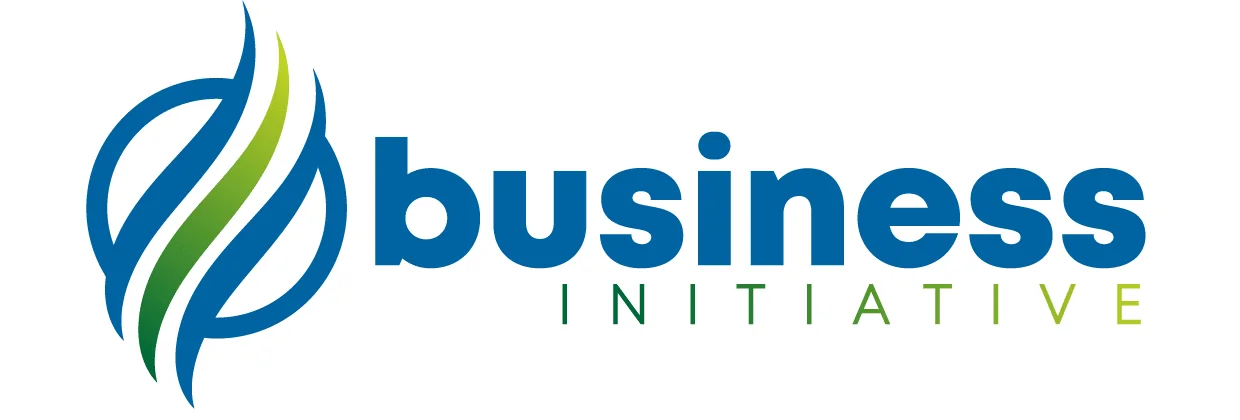 Key Takeaways
Key Takeaways
- Diversity and inclusion are not just buzzwords; they're essential for business success.
- Assessing your current efforts towards diversity and inclusion is the first step towards progress.
- Creating a safe space for employees to voice their concerns is crucial in fostering an inclusive workplace culture.
- Training and education on unconscious bias can help employees recognize and address their own biases.
- Embracing diversity means actively seeking out underrepresented voices, not just checking off boxes on a diversity checklist.
In this comprehensive guide, we will explore the importance of corporate diversity and inclusion, how to assess your company’s efforts in this area, and practical strategies for creating a more inclusive workplace culture.
By the end of it, you’ll have a deeper understanding of why diversity and inclusion are critical for businesses to thrive in today’s globalized world, and actionable steps to implement in your own workplace.
 Table of Contents
Table of Contents
What is Corporate Diversity?
Definition: Corporate diversity refers to the variety of differences among employees in a workplace, such as race, ethnicity, gender, age, religion, sexual orientation, and more.
Embracing corporate diversity is not only the right thing to do but it also has significant benefits for businesses.
According to McKinsey & Company’s Diversity Matters Report, companies in the top quartile for racial and ethnic diversity are 36% more likely to have financial returns above their respective national industry medians.
Additionally, companies with gender-diverse executive teams are 25% more likely to have above-average profitability than those without.
These statistics demonstrate embracing corporate diversity is not just a moral imperative but also a smart business decision that can lead to increased innovation and financial success.
Why is Embracing Diversity & Inclusion Important for Your Business?
Research has shown companies with diverse teams outperform their homogeneous counterparts in terms of innovation, creativity, and financial performance.
A diverse workforce brings a range of perspectives, experiences, and ideas which can help businesses better understand and address the needs of their customers.
For example, tech giant Apple has made diversity and inclusion a priority.
In 2015, they launched a $50 million initiative to increase the diversity of their workforce and have since made significant strides in hiring more women and underrepresented minorities.
Companies can benefit from providing diversity and inclusion training to their managers.
By doing so, managers can learn how to effectively lead diverse teams, recognize and address unconscious bias, and create a more inclusive work environment.
When you embrace diversity and inclusion, your business can tap into a wider pool of talent, foster creativity and innovation, and improve overall business performance.
Research has shown that such training programs can improve attitudes towards diversity among employees, increase cultural competence, and reduce incidents of harassment or discrimination.
By equipping managers with the tools they need to lead diverse teams effectively, businesses can improve employee morale and retention rates.
For example, financial services company American Express has been successful in increasing diversity through their “BlueWork” initiative.
This program offers employees a range of resources and training opportunities on topics such as unconscious bias, cross-cultural communication, and building inclusive teams.
By investing in diversity and inclusion training for managers, companies can create a more equitable workplace where all employees feel valued and included.
This not only benefits individual employees but also leads to improved business performance overall.
Assessing Your Company’s Diversity & Inclusion Efforts
Assessing your company’s diversity and inclusion efforts is an important step towards creating a more inclusive workplace.
This information can help you identify areas for improvement and develop strategies for change.
Here are some practical instructions for conducting an assessment:
1. Conduct a survey
A survey is a great way to gather feedback from employees on their experiences with diversity and inclusion in the workplace.
The survey should include questions about the company’s policies, practices, and culture related to diversity and inclusion.
You can use a tool like SurveyMonkey to create and distribute the survey with ease.
2. Conduct focus groups
Focus groups are a great way to gather more in-depth feedback from employees.
You can use the feedback from the survey to identify specific areas to focus on in the focus groups.
Make sure to include employees from a diverse range of backgrounds in the focus groups.
3. Analyze employee demographics
Analyzing employee demographics can help you identify areas where your company may be lacking in diversity.
You can use data from your HR department to analyze employee demographics by race, gender, age, and other factors.
4. Analyze retention rates
Analyzing retention rates can help you identify if there are any groups of employees who are leaving the company at a higher rate than others.
This can be an indicator of issues related to diversity and inclusion.
Implementing Inclusive Hiring Practices
Creating a more diverse and inclusive workplace starts with developing inclusive hiring practices. Here are some practical steps to take:
-
Remove biases from job descriptions
Use gender-neutral language and avoid using words that may be associated with a particular gender, such as “ninja” or “rockstar.”
Also, focus on the qualifications and skills needed for the job, rather than personal characteristics.
Intel has been successful in increasing diversity through their “WarmLine” initiative, which provides employees with a confidential way to report concerns about bias in hiring and promotion practices.
-
Expand recruitment efforts
Reach out to diverse communities and organizations to attract a wider pool of candidates.
This can include attending job fairs and conferences, partnering with diversity-focused organizations, and posting job listings on websites that cater to underrepresented groups.
-
Implement blind resume screening
This involves removing personal information, such as name and address, from resumes to reduce unconscious bias.
Instead, focus on the candidate’s qualifications and experience.
According to a study by the National Bureau of Economic Research, resumes with “white-sounding” names were 50% more likely to receive callbacks for job interviews than those with “black-sounding” names.
Blind resume screening can help reduce this type of bias.
-
Train hiring managers
Provide training on unconscious bias and how to conduct inclusive interviews.
This can include using structured interview questions that focus on job-related skills and experience, rather than personal characteristics.
A study by the Harvard Business Review found that structured interviews are twice as effective at predicting job performance as unstructured interviews.
This can help ensure that hiring decisions are based on job-related factors rather than personal biases.
How to Foster an Inclusive Workplace Culture?
Creating an inclusive workplace culture involves creating policies and practices that promote diversity and inclusion. Here are some practical instructions to foster an inclusive workplace culture:
1. Provide training on unconscious bias to all employees.
According to a study by Harvard Business Review, 72% of Black, Asian, and minority ethnic employees have experienced bias at work.
Unconscious bias training can help employees recognize their biases and learn how to overcome them.
2. Establish employee resource groups (ERGs) to provide support and networking opportunities for underrepresented groups.
According to a study by Deloitte, companies with ERGs have higher employee engagement and retention rates.
3. Offer family-friendly policies such as flexible work arrangements and parental leave.
According to a study by the Society for Human Resource Management, 89% of employers offer flexible work arrangements, and companies that offer paid parental leave have higher retention rates.
4. Ensure all employees have access to healthcare benefits, including same-sex couples.
According to a study by the Human Rights Campaign, 67% of Fortune 500 companies offer healthcare benefits to same-sex couples.
By implementing these practical instructions, companies can foster an inclusive workplace culture that promotes diversity and inclusion.
For example, Marriott International has implemented a range of policies to promote diversity and inclusion, including offering flexible work arrangements, providing healthcare benefits to same-sex couples, and requiring diversity training for all employees.
What is Stopping Diversity in Your Business?
There are several factors that can prevent diversity and inclusion in the workplace. Here are some of the biggest ones:
Unconscious bias
This refers to the attitudes or stereotypes that people hold about certain groups of people, without necessarily being aware of it.
These biases can lead to discriminatory practices that limit diversity.
- The solution: Provide unconscious bias training to all employees and implement processes to mitigate bias in hiring, promotions, and performance evaluations.
Lack of representation
When there is a lack of diversity at the top levels of an organization, it can be difficult to create an inclusive culture that values different perspectives and experiences.
- The solution: Set diversity goals and hold leadership accountable for meeting them. Create mentorship and sponsorship programs to help diverse employees advance.
Hiring practices
If hiring practices are not designed to attract a diverse pool of candidates, it can be difficult to build a diverse workforce.
- The solution: Use blind resume screening and diverse interview panels to reduce bias. Partner with diverse organizations to attract a wider pool of candidates.
Inflexible work arrangements
When workplaces are not accommodating to different needs and lifestyles, it can make it difficult for people with different experiences to succeed.
- The solution: Offer flexible work arrangements, such as remote work and flexible hours, to accommodate different needs and lifestyles.
Harassment and discrimination
When harassment or discrimination occurs in the workplace, it can create a hostile environment that discourages diversity and inclusion.
- The solution: Implement zero-tolerance policies for harassment and discrimination. Provide training to all employees on how to identify and report harassment and discrimination.
By addressing these factors, you can take steps towards fostering a more diverse and inclusive workplace culture in no time.
In Conclusion…
Creating a more diverse and inclusive workplace is crucial for businesses to thrive in today’s globalized world.
By assessing your company’s current efforts, implementing inclusive hiring practices, and fostering an inclusive workplace culture, you can create a more equitable and successful business.
As you strive to create a more diverse and inclusive workplace, it’s important to seek guidance and support from experts in the field.
From inclusive hiring practices to fostering an inclusive workplace culture, Business Initiative provides the guidance and support you need to create a more equitable and successful business.
So why wait?
Start embracing diversity and inclusion today!
We offer consultation services to help businesses like yours develop and implement effective diversity and inclusion strategies.
Schedule a free consultation TODAY!
Our team of experienced professionals can work with you to assess your current efforts, identify areas for improvement, and develop customized solutions to meet your specific needs.
Don’t wait any longer to start embracing diversity and inclusion!
Contact us today through our website’s contact page or send us a message on X (Twitter).
Let us help you unlock the full potential of your workforce and position your business for success in today’s global marketplace.
Sources
- "The Business Case for Diversity in the Workplace is Now Overwhelming"
- "Diversity and Inclusion"
- "Intel's Plan to Increase Diversity in Tech: A WarmLine for Workers"
- National Bureau of Economic Research
- Harvard Business Review
- Deloitte
- Society for Human Resource Management
- Human Rights Campaign
- Harvard Business Review
- Forbes
- The Society for Human Resource Management
- Harvard Business Review
- American Express: BlueWork


